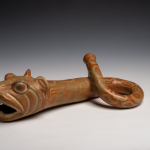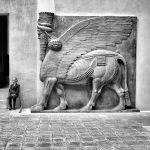Statue of Akhenaten and Nefertiti
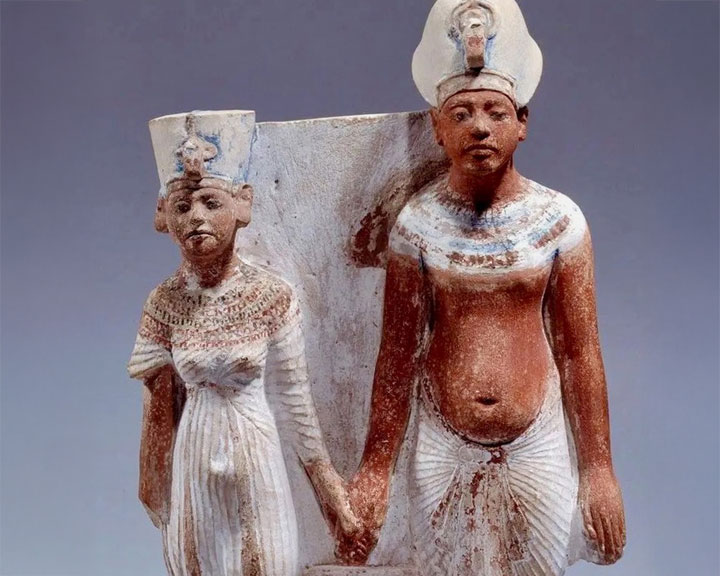
This small painted votive statue depicts King Akhenaten and his Great Royal Wife, Nefertiti, shown hand in hand—a rare pose in New Kingdom art—appearing to walk forward together. Both figures stand rigidly, facing ahead without expression, dressed in finely pleated linen garments and broad collars. Akhenaten wears the Blue Khepresh Crown, while Nefertiti is distinguished by her tall, flat-topped headdress.
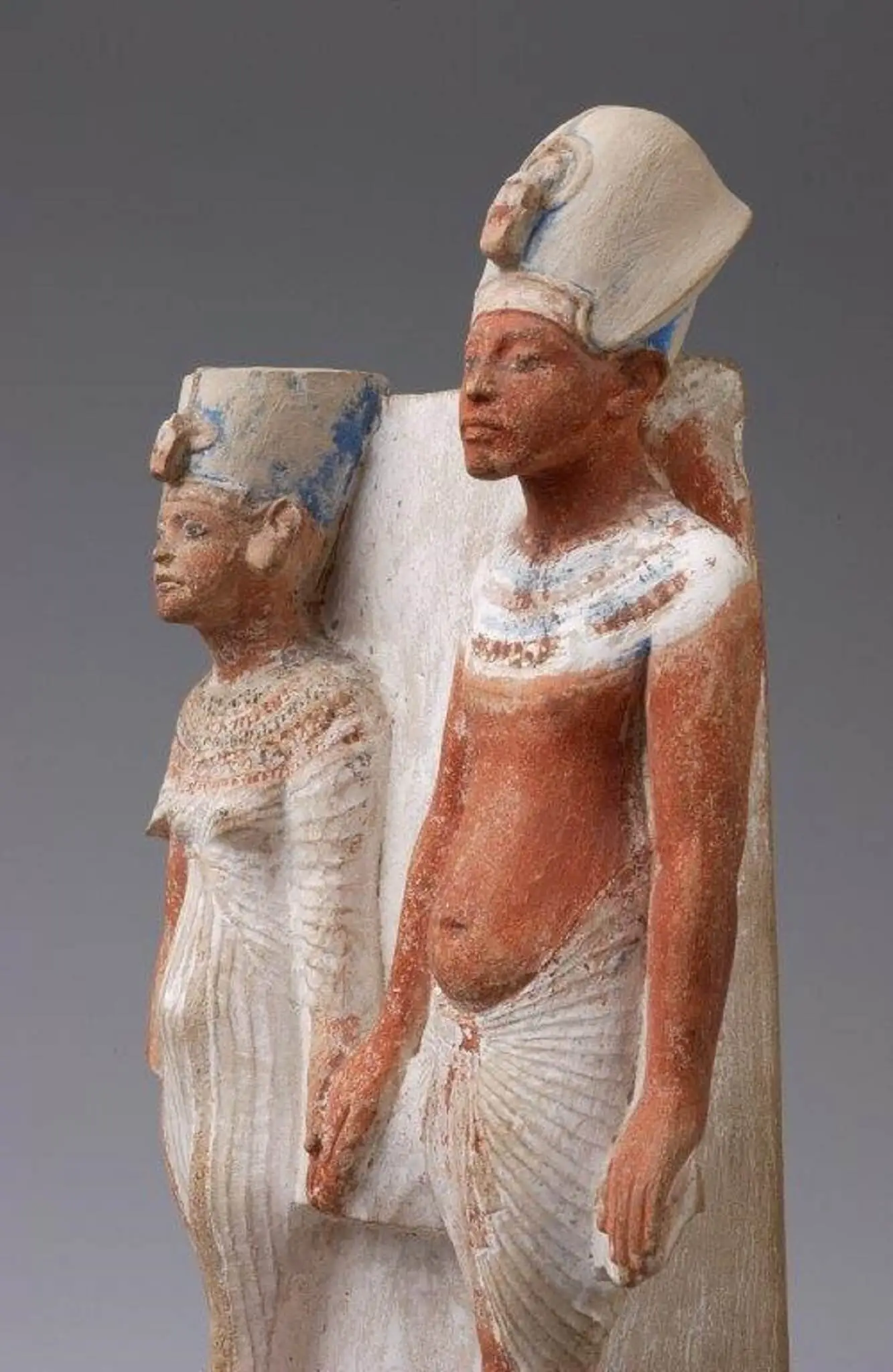
Under Akhenaten’s radical religious reforms, the traditional Egyptian pantheon was replaced by the worship of the Aten, the solar disk. Yet Aten was regarded as distant, its rays descending to bless the earth. To mediate this divine presence, Akhenaten and his family—especially Nefertiti and their daughters—were presented as exclusive intermediaries, uniquely favored by Aten. Artistic depictions often show them receiving the sun’s rays, ending in tiny hands holding ankhs that offered them life and breath.
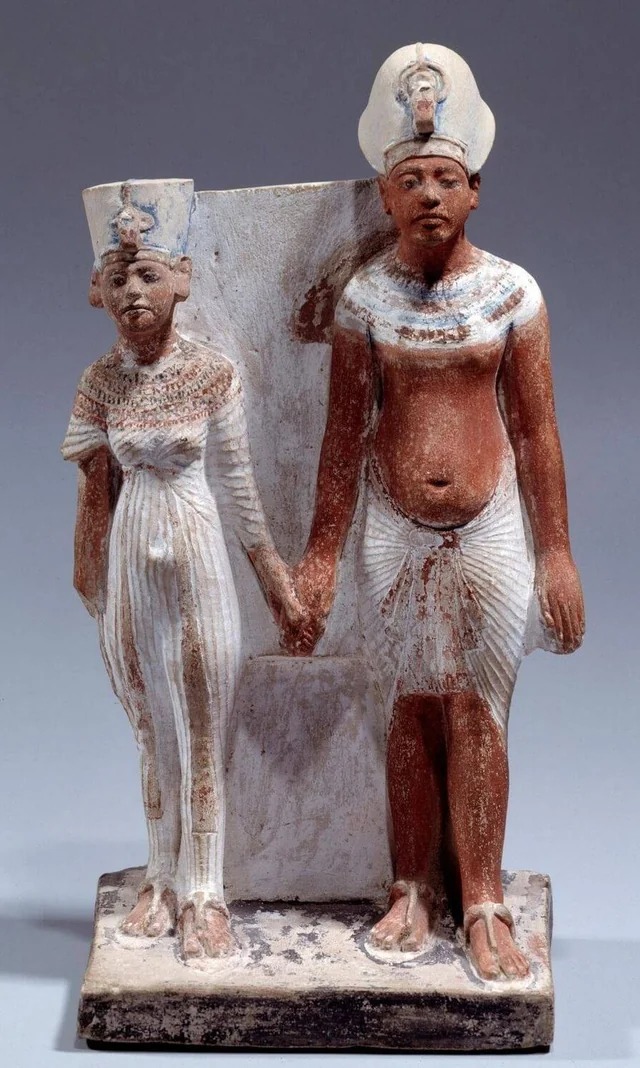
In Akhetaten (modern Tell el-Amarna), household shrines and stelae featuring the royal family served as objects of devotion. Egyptians placed offerings and prayers before these images, appealing to the king and queen to intercede with Aten for health, prosperity, and protection. This elevated the royal family into semi-divine status, concentrating religious authority entirely upon them.
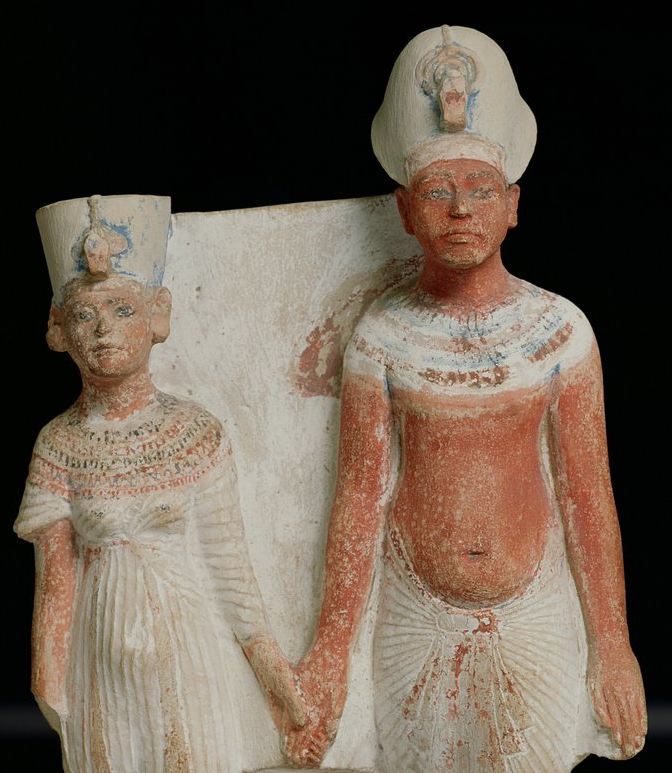
The statue may once have stood in such a shrine, blessing the residents of Akhetaten. However, following the collapse of Akhenaten’s religious revolution, many depictions of him, Nefertiti, and their children were intentionally defaced or destroyed. As Egyptologist Aidan Dodson notes, Nefertiti’s statues were often decapitated or smashed in antiquity, reflecting the backlash against her husband’s failed reforms.
New Kingdom, 18th Dynasty, Amarna Period, reign of Akhenaten, ca. 1353–1336 BC. Now in the Louvre (E 15593).





